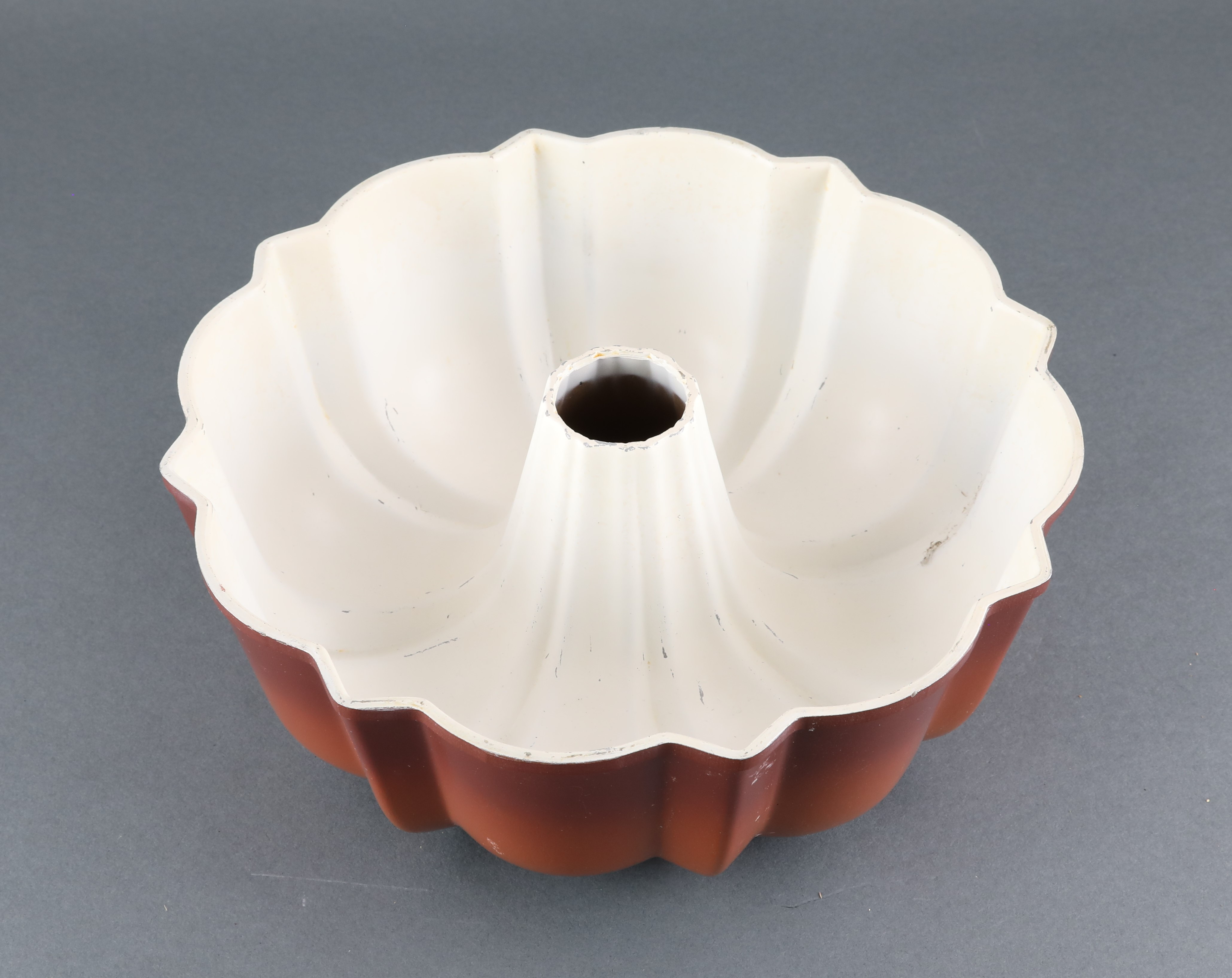August 27, 2018
Nordic Ware boasts a long history of innovative engineering and manufacturing of cookware. Their most famous product is undoubtably the Bundt pan. Today more than 70 million American households have one of these iconic pans in their kitchens. Despite producing a wide variety of products, the Bundt pan remains the most recognizable and has maintained the most longevity. Bundt pans, like those in our collection, are a broadly fluted circular mold made of aluminum. While there are many different recipes for Bundt cakes, they all have one thing in common, the unique shape created by the Bundt pan that forms grooved sides and a cylindrical hole through the middle the cake. While many people are familiar with the Bundt pan, most are not familiar with the history of hard work, innovation, and local connections that led to its creation.

Dave Dalquist and his wife Dotty started their business, originally named Plastics for Industry, in the basement of their Minneapolis home in 1946. The company made parts for General Mill’s home appliances. Shortly thereafter they began to manufacture Scandinavian kitchenware. In 1950 they acquired Northland Aluminum Products and thus inherited a line known as Nordic Ware. That same year, Dalquist was approached by two members of the local chapter of Hadassah, a Jewish women’s volunteer organization, about recreating a mold from the Old World that was known as a bund pan in Germany. Bund cakes, or bundkuchen, were served for various celebrations in which people gathered together. The Hadassah women gave Dalquist a cast iron model of the mold from which he created a cast aluminum pan. They then sold the pans to fellow members of their organization locally and nationally, and the money earned was sent to Israel to help pay for schools and hospitals.


Due to the popularity of the pans, Dalquist started to market the bund pans to the public. He added the “t” to the end of the word so that he could trademark it and avoid any association with a German-American pro-Nazi group that existed in the thirties and forties with the same name. Despite being sold in major department stores for several years, the Bundt pan didn’t become famous until 1966 when a woman used a Bundt pan to win second place in the Annual Pillsbury Bake-Off Contest. After this, Pillsbury was inundated with inquiries from women who wanted to know where they could purchase a Bundt pan. Both Nordic Ware and Pillsbury recognized the potential for partnership and soon after Pillsbury began creating a new kind of cake mix that was developed especially to be used with Bundt pans. When three versions of cake mix had been developed, Pillsbury began to offer them along with a Bundt pan at a discounted price. Bundt pans began flying off the shelves, outperforming all expectations and achieving international fame.
Today, two out of three Americans have a Nordic Ware product in their kitchen. After over seven decades Nordic Ware is still family owned and operated, and one of only a few companies that continues to manufacture their products in the United States, doing so at their factory in Minneapolis. By striving to innovate kitchenware characterized by quality and value, the company has grown to employ over 350 people and produce hundreds of products sold globally. If all this was not enough evidence of Nordic Ware’s success, the nostalgic feelings and fond memories of family gatherings inspired by Bundt cakes certainly are.
Written by Alyssa Thiede
Our Nordic Ware collection was inventoried and cataloged as part of our larger collections inventory project. This publication was made possible in part by the people of Minnesota through a grant funded by an appropriation to the Minnesota Historical Society from the Minnesota Arts and Cultural Heritage Fund. Any views, findings, opinions, conclusions or recommendations expressed in this publication are those of the authors and do not necessarily represent those of the State of Minnesota, the Minnesota Historical Society, or the Minnesota Historic Resources Advisory Committee.

